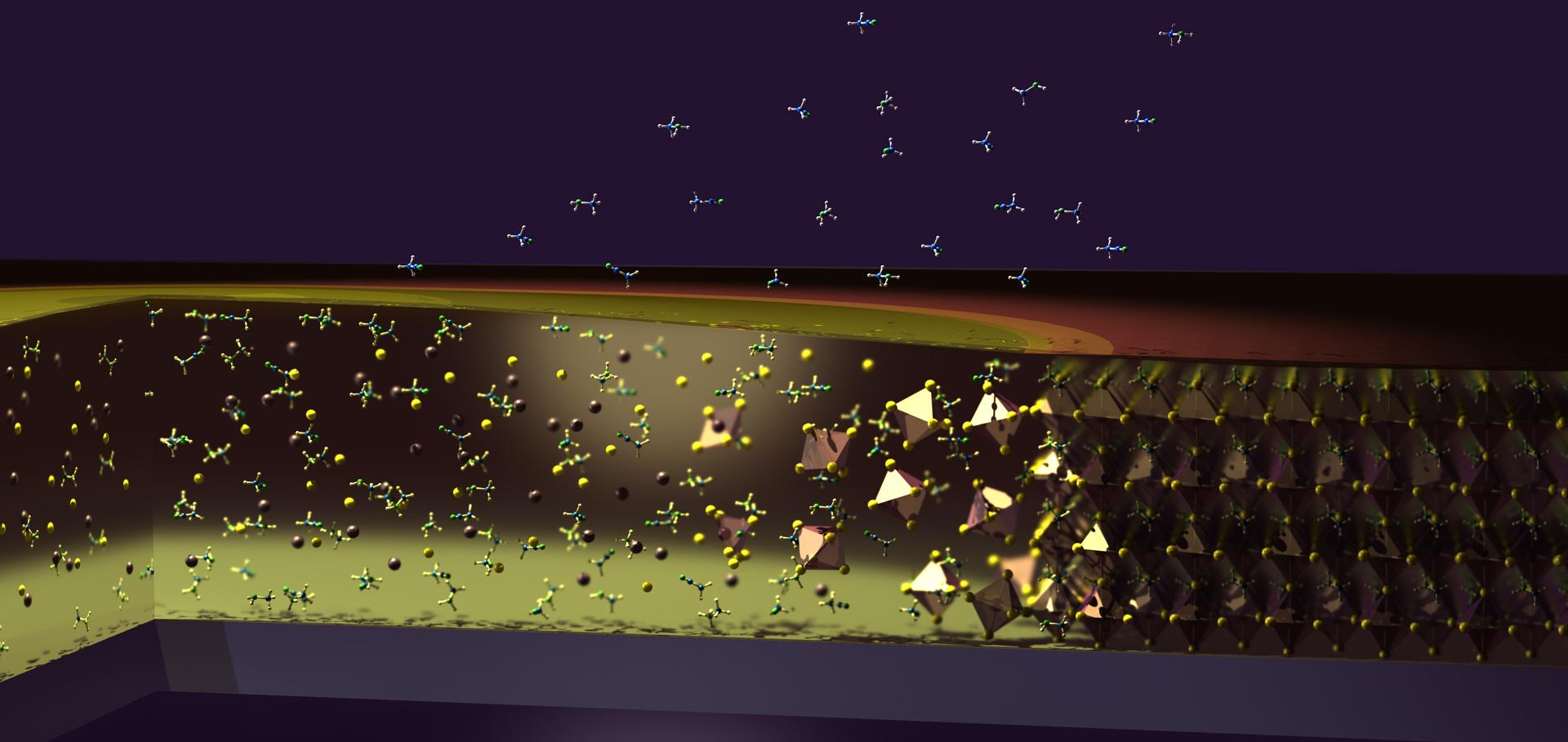Interfacial Charge-transfer Doping of Metal Halide Perovskites for High Performance Optoelectronics
Fundacio Scito (2019)
Solution-Processed All-Perovskite Multi-Junction Solar Cells
Fundacio Scito (2019)
Solution-processed all-perovskite multi-junction solar cells
Joule Elsevier 3:2 (2019) 387-401
Facile synthesis of stable and highly luminescent methylammonium lead halide nanocrystals for efficient light emitting devices
Journal of the American Chemical Society American Chemical Society 141:3 (2019) 1269-1279
Abstract:
Metal halide perovskites are promising candidates for use in light emitting diodes (LEDs), due to their potential for color tunable and high luminescence efficiency. While recent advances in perovskite-based light emitting diodes have resulted in external quantum efficiencies exceeding 12.4% for the green emitters, and infrared emitters based on 3D/2D mixed dimensional perovskites have exceeded 20%, the external quantum efficiencies of the red and blue emitters still lag behind. A critical issue to date is creating highly emissive and stable perovskite emitters with the desirable emission band gap to achieve full-color displays and white LEDs. Herein, we report the preparation and characterization of a highly luminescent and stable suspension of cubic-shaped methylammonium lead triiodide (CH3NH3PbI3) perovskite nanocrystals, where we synthesize the nanocrystals via a ligand-assisted reprecipitation technique, using an acetonitrile/methylamine compound solvent system to solvate the ions and toluene as the antisolvent to induce crystallization. Through tuning the ratio of the ligands, the ligand to toluene ratio, and the temperature of the toluene, we obtain a solution of CH3NH3PbI3 nanocrystals with a photoluminescence quantum yield exceeding 93% and tunable emission between 660 and 705 nm. We also achieved red emission at 635 nm by blending the nanocrystals with bromide salt and obtained perovskite-based light emitting diodes with maximum electroluminescent external quantum efficiency of 2.75%.Mixed Lead–Tin Halide Perovskites for Efficient and Wavelength‐Tunable Near‐Infrared Light‐Emitting Diodes
Advanced Materials Wiley 31:3 (2019) e1806105


